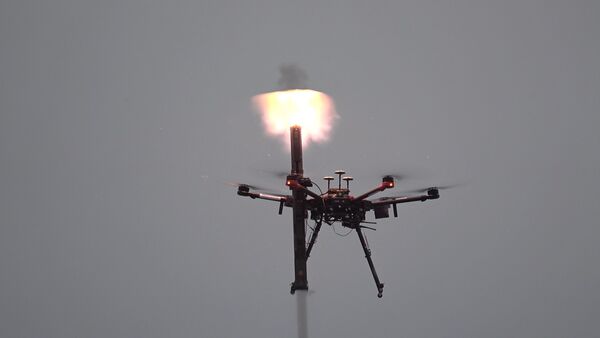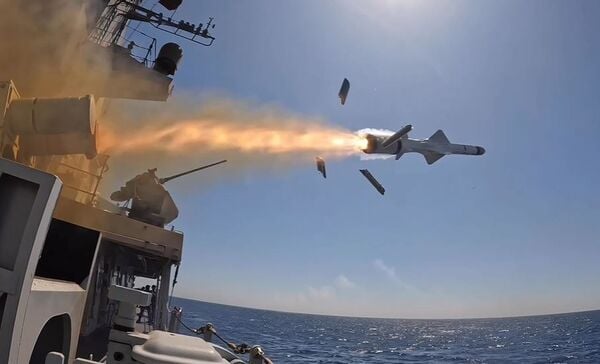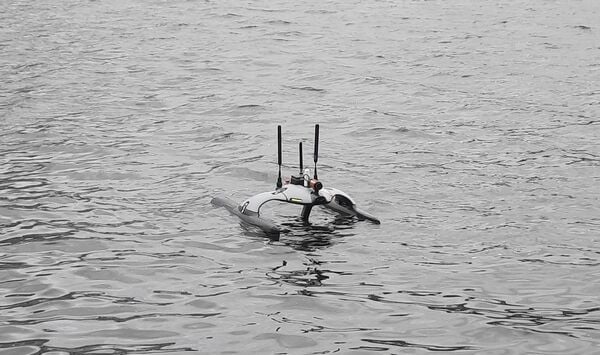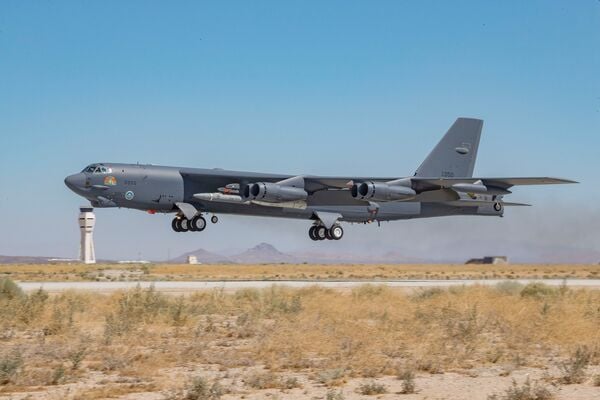- About
- Intara
- Capabilities
- Advisory
- Resources
- News
- Store
Nammo finalises drone-mounted M72 development
21 December 2021
by Robin Hughes


The ‘M72 Airborne' concept: an M72 ASM RC round is launched from DJI Matrice 600 hexacopter drone demonstrator during a live-fire demonstration trial in Norway. (Nammo Raufoss)
Nammo Raufoss in Norway has finalised development of a unique low-cost loitering weapon concept that marries an M72-series 66 mm single-use lightweight anti-armour weapon with a manportable drone.
Provisionally designated ‘M72 Airborne', the concept is intended to provide the infantry user with close-range shoulder-fired surface-to-surface or stand-off-range air-to-surface top attack engagement options in one weapon system.
“With the M72 mounted on a drone, users can bring the weapon to the target in a way not previously possible. This opens up both a ‘top attack' option against more heavily armoured targets, even up to main battle tanks, while at the same time removing operators from the danger zone,” Quoc Bao Diep, vice-president, Large Caliber Systems at Nammo Raufoss, told Janes. The M72 variants designed to be used against armoured targets can penetrate at least 450 mm of steel.
Indonesia to restart procurement process for more Exocet missiles
18 March 2024
by Ridzwan Rahmat


An Exocet MM40 Block 3 missile being launched from an Indonesian Navy Bung Tomo-class frigate. The country's latest attempt to replenish its stock of Exocet missiles has been delayed by non-conformity issues. (Indonesian Navy Armada I)
Indonesia will have to restart a process to replenish the country's stock of MBDA Exocet MM40 Block 3 anti-ship missiles after an earlier attempt failed because of licensing non-conformity issues.
A 24 February letter from the Indonesian Ministry of Finance's (MoF's) Directorate General of Budget Financing and Risk Management sent to various departments at the country's Ministry of Defense (MoD) confirmed that a previously granted permission to procure the missiles with foreign loans has now lapsed.
A copy of the letter was provided to Janes on 18 March by sources close to the procurement process.
In the letter, the MoF advised the respective MoD departments to resubmit a request for a total of three programmes for which the permission to take on foreign loans has lapsed, including the Exocet missile procurement.
EvoLogics preparing further deliveries of Sonobot USVs to Ukrainian armed forces
18 March 2024
by Neil Dee


EvoLogics Sonobot 5 USV being demonstrated at Oceanology International 2024 in London on 13 March. (Janes/Neil Dee)
German company EvoLogics is planning to deliver a further batch of Sonobot unmanned surface vehicles (USVs) to the Ukrainian armed forces. EvoLogics CEO Fabian Bannasch told Janes at Oceanology International 2024, held in London on 12–14 March, that his company is “currently preparing a fourth configuration of Sonobot with enhanced underwater data networking and positioning capabilities in order to guide and support complex underwater missions with dive teams, and AUVs [autonomous underwater vehicles] where the Sonobot will be the gateway buoy at the surface” for the Ukrainian armed forces. Sonobots are a family of small USVs of about 1.3 m in length that can be folded and transported by a single person.
Pentagon budget 2025: USAF funds HACM but not ARRW development
13 March 2024
by Zach Rosenberg


A B-52H Stratofortress assigned to the 419th Flight Test Squadron takes off from Edwards Air Force Base, California, in 2020. The aircraft conducted a captive-carry flight test of the AGM-183A ARRW, a programme that is zeroed out in the FY 2025 budget. (US Air Force/Matt Williams)
The US Air Force (USAF) requested just shy of USD517 million to continue development of Raytheon's Hypersonic Attack Cruise Missile (HACM) hypersonic air-breathing missile in its fiscal year (FY) 2025 presidential budget request, but zeroed out the procurement of the Lockheed Martin AGM-183 Air-launched Rapid Response Weapon (ARRW) hypersonic boost-glide weapon.
The FY 2025 funding request is a change from that of FY 2024, which requested USD350 million for HACM and USD150 million for ARRW.
ARRW was for years considered the frontrunner in the US's race to field an air-launched hypersonic weapon, but the system has seen mixed results in all-up round flight-testing, notching both successes and failures. The final all-up round test is thought to be upcoming, following the USAF's publication of a photograph depicting the munition in Guam, hanging from the wing of its B-52 launch platform.
Nammo Raufoss in Norway has finalised development of a unique low-cost loitering weapon concept that...
Latest Podcasts
Iran Israel analysis
In this podcast Janes analysts discuss the Iranian attacks on Israel on the 14 April. They highlight the military systems used by Iran and the performance and impact of these on Israel. They also discuss the implications of this attack goi...
Listen nowJanes Case Studies
Using Janes Intara to build a common intelligence picture: Russian build up on the Ukrainian border
View Case StudyNews Categories
 Weapons Details
Weapons Details